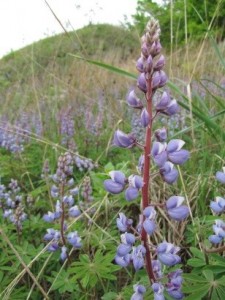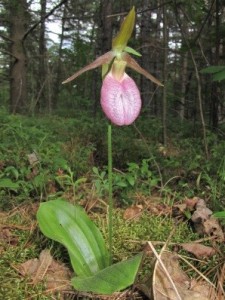YOUR DAILY DOSE OF BOTANY – May 2015
Corolla Diversity, Part IV
by Scott Namestnik, snamestnik@orbisec.com
If you’ve been following this column in The Plant Press this winter, you know that we’ve been discussing the vast diversity in corolla types that can be found on our native plants in the Great Lakes region. Last month we looked at zygomorphic corollas with fairly distinct tubes below the limbs. Here we conclude our investigation of corolla types by looking at two zygomorphic corolla types that lack a distinct tube and are more irregular in shape.
If you can think back to this column in the March 2014 issue of The Plant Press, you will recall that we looked in detail at the flowers of the largest of the three subfamilies of the family Fabaceae (the legume family), known as the Papilionoideae. The flowers in the Papilionoideae have the appearance of a butterfly, and for that reason they are considered papilionaceous (“papilio” is the word for “butterfly” in Latin). Wild lupine (Lupinus perennis), which grows in black oak (Quercus velutina) savannas and which is well known as the only host plant for the federally endangered Karner blue butterfly (Lycaeides melissa samuelis), is an example of a plant with papilionaceous corollas.
As the name implies, a saccate corolla is one that contains a pouch or bladder. A great example of a saccate corolla can be seen in pink lady’s slipper (Cypripedium acaule), an uncommon orchid which grows in in bogs and woods with acidic soils.
If you have a question about plant terminology or morphology that you would like answered in a future edition of this column, send me an email at snamestnik@orbisec.com. I may not be able to address all requests given the space allotted for this column, but I will answer those that I can.


